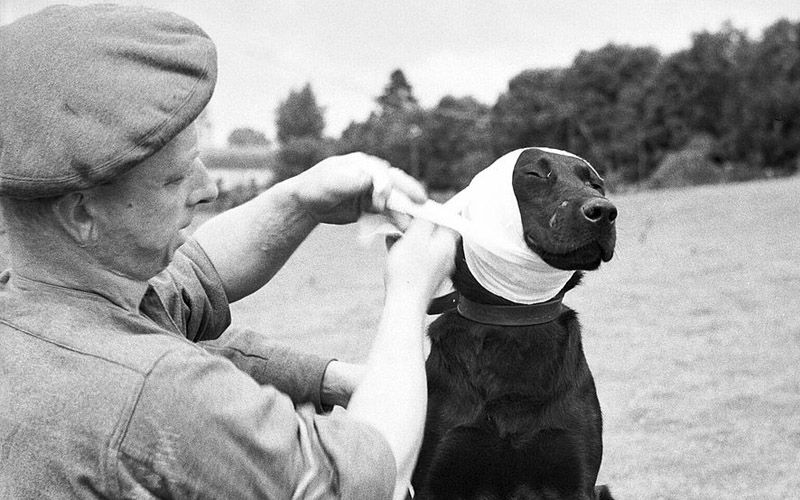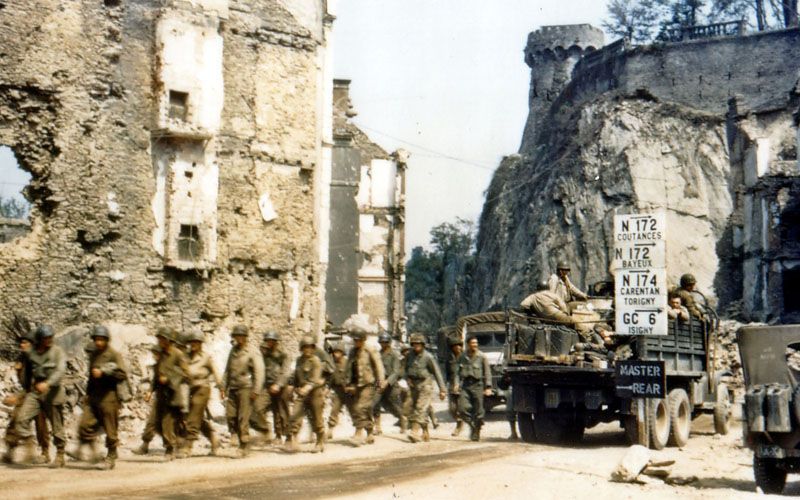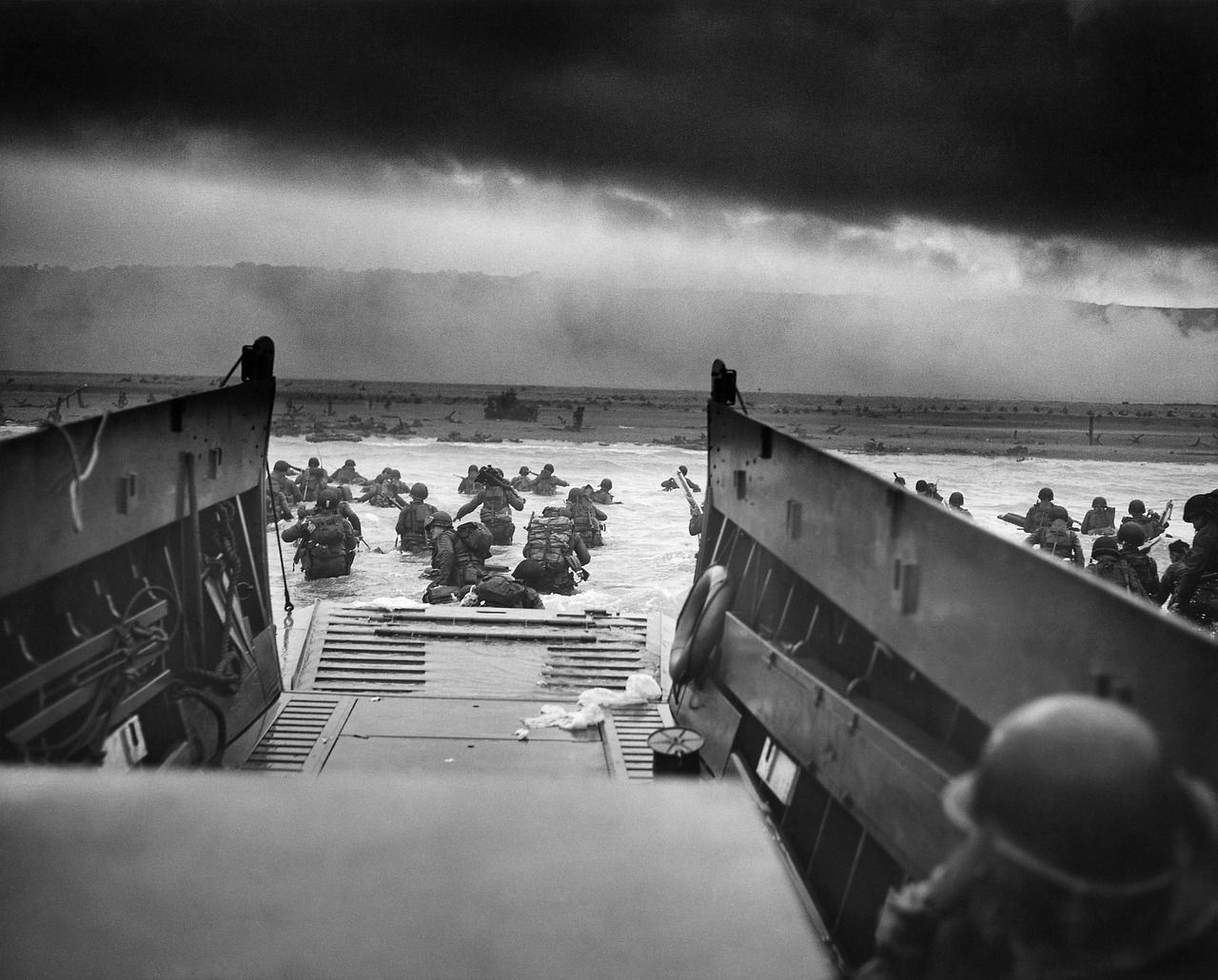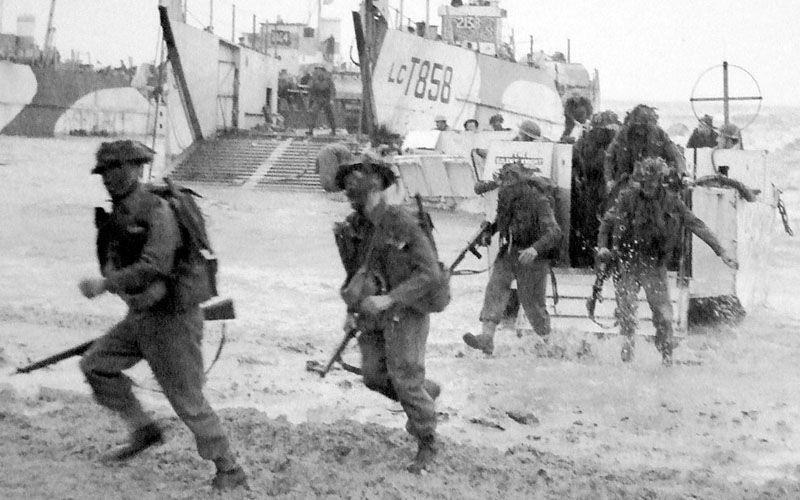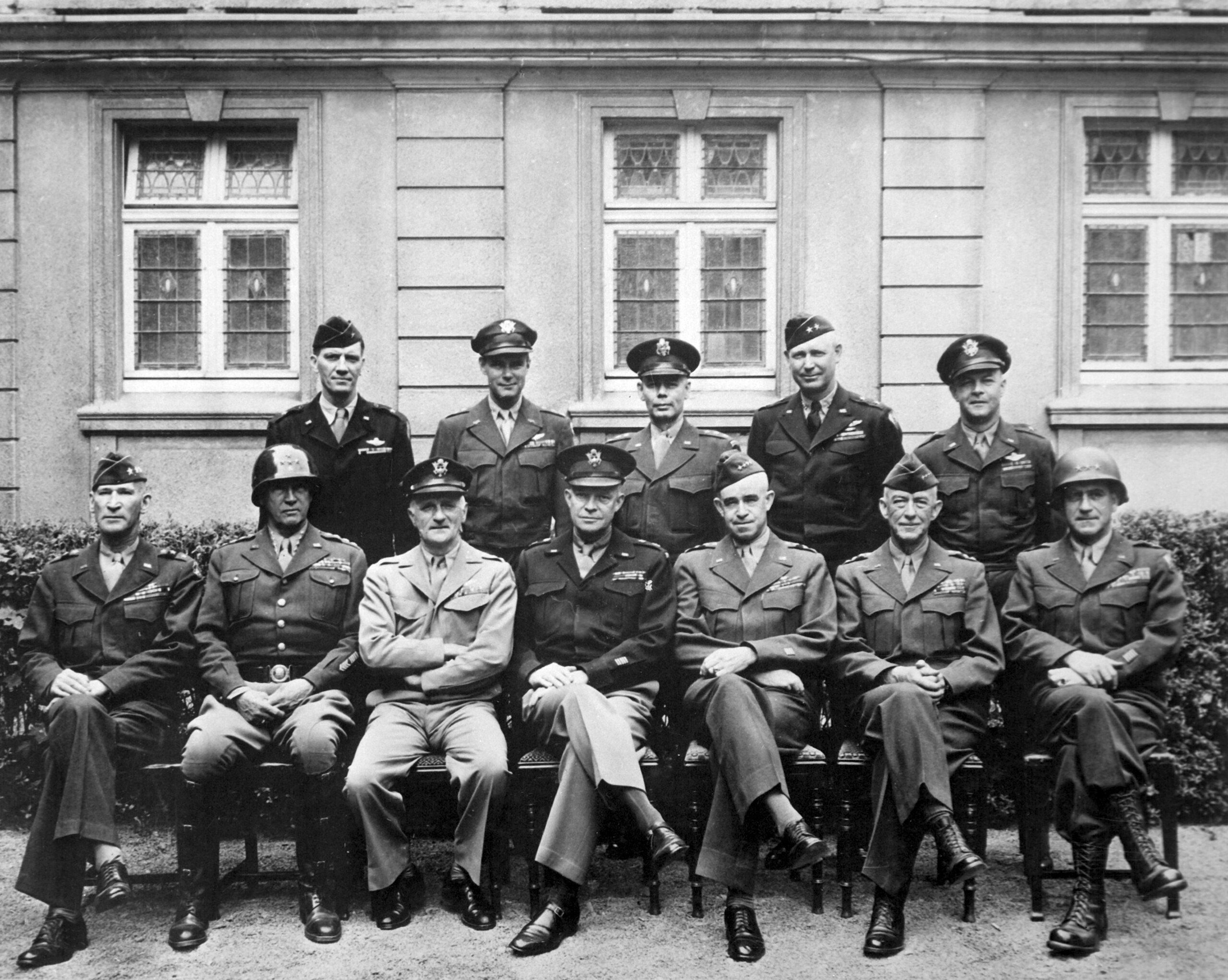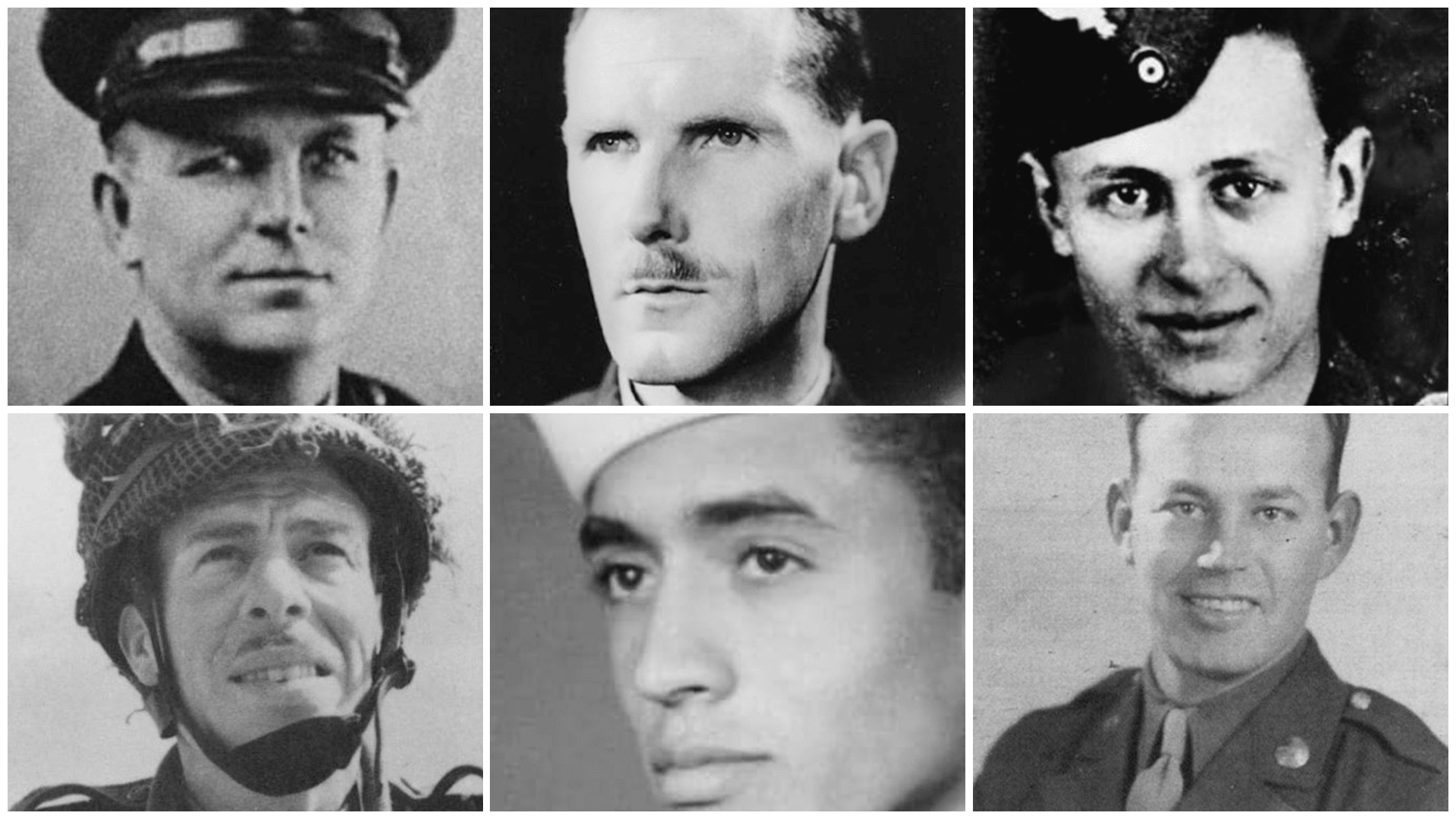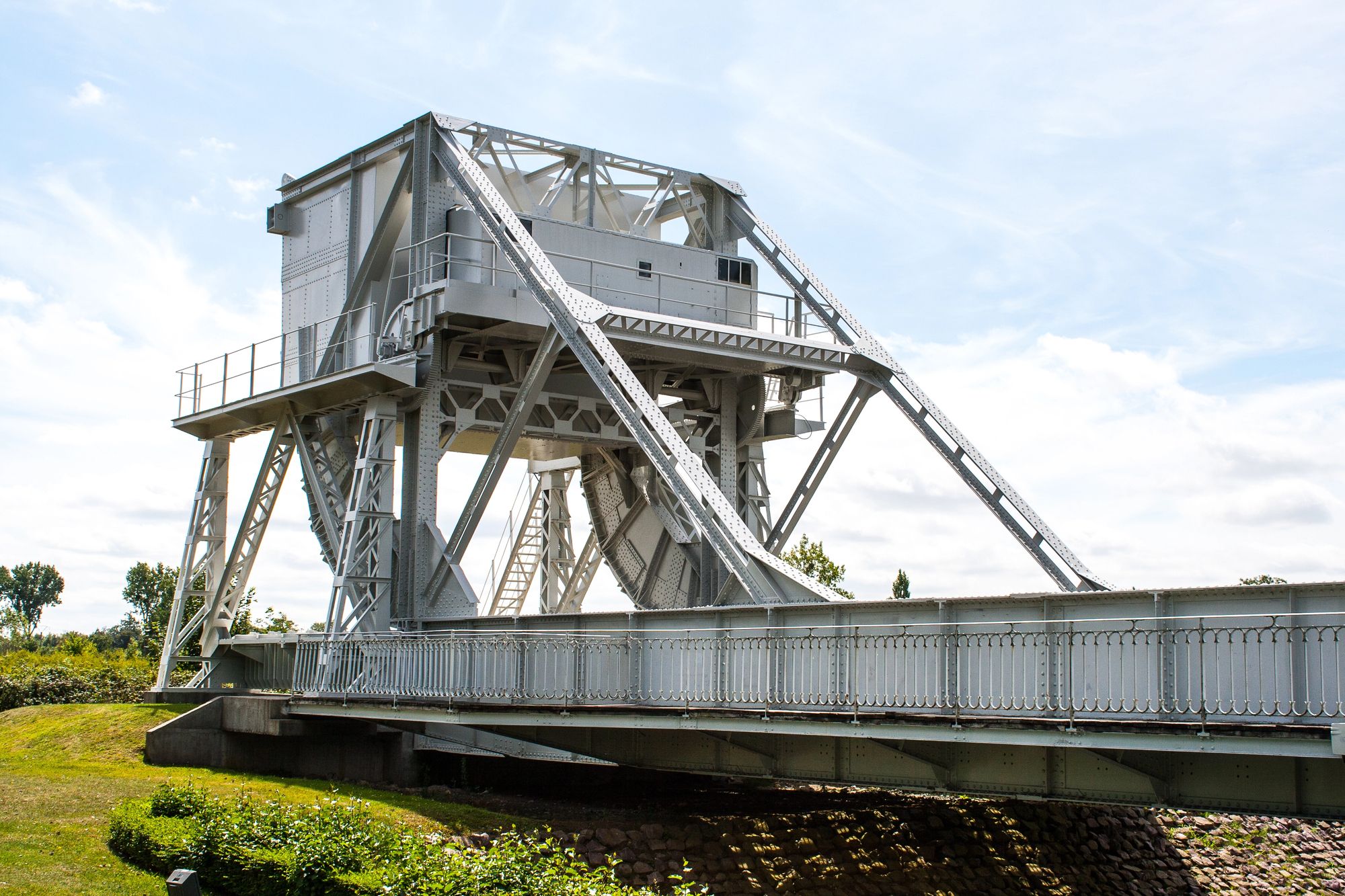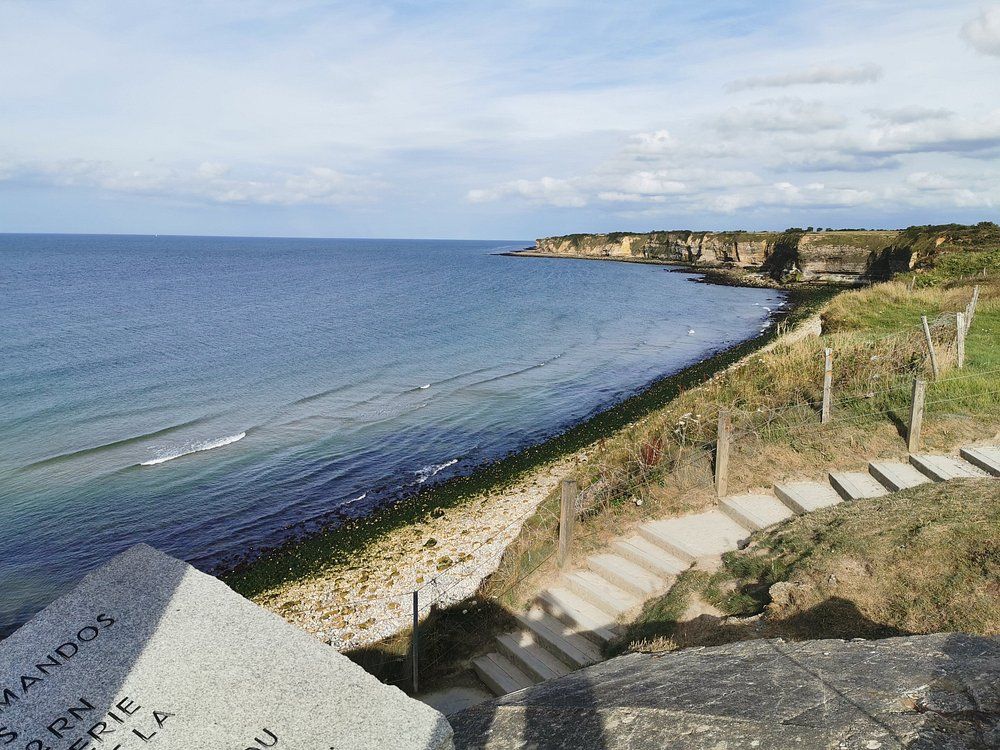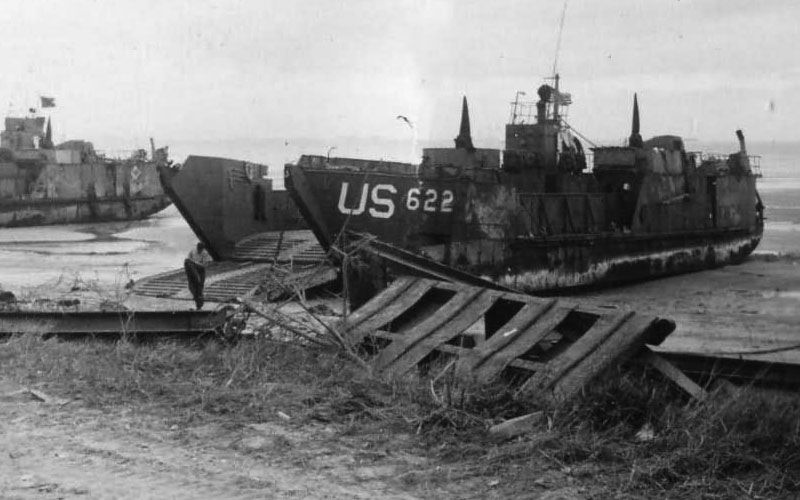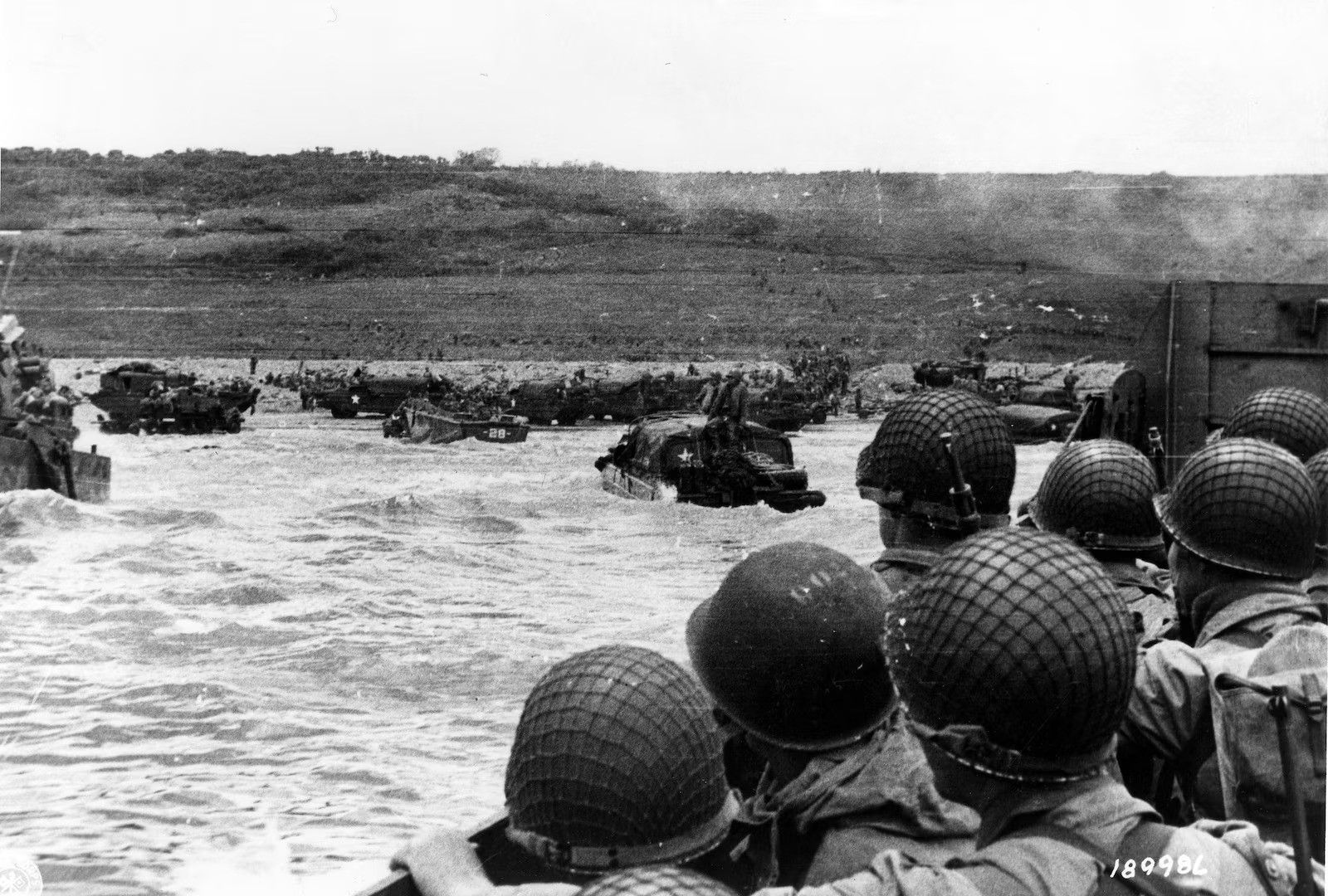Omaha Beach stands as one of the most significant landing sites during Operation Overlord, the Allied invasion of Normandy on June 6, 1944. Located between Port-en-Bessin and the Vire River, it stretched across five miles of heavily defended French coastline. This beach was strategically important as it linked the American and British sectors of the invasion force.
Omaha Beach saw some of the bloodiest fighting of D-Day, with American forces facing intense German resistance from heavily fortified positions overlooking the shore. The men of the 1st and 29th Infantry Divisions who waded ashore that morning encountered devastating fire, yet their perseverance ultimately secured this crucial foothold in Nazi-occupied France.
The assault on Omaha Beach was led by Rear Admiral John L. Hall commanding Task Force 124 from the USS Ancon. Despite being the most restricted and heavily defended of all five landing beaches, the American troops pushed forward through overwhelming odds. Their sacrifice and determination at Omaha Beach became a defining moment of World War II and the beginning of the end for Hitler’s Third Reich in Western Europe.
Historical Context of the Normandy Invasion
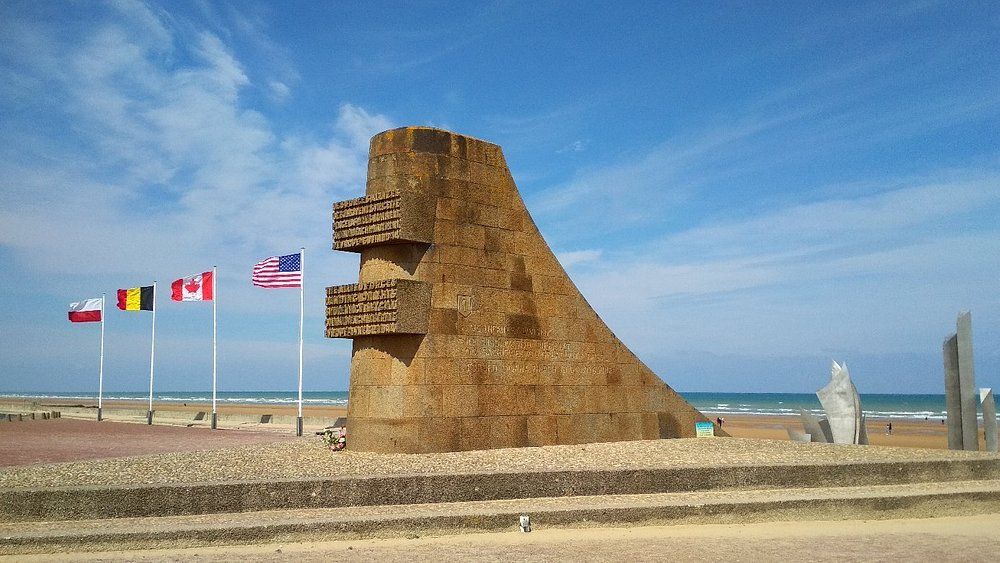
By 1944, World War II had been raging for nearly five years. Nazi Germany controlled most of Western Europe, including France, which fell in 1940.
The Allies (United States, Great Britain, and other nations) recognized that defeating Germany required a major invasion of mainland Europe. This massive operation would become known as Operation Overlord.
Planning for the Normandy Invasion began in 1943. General Dwight D. Eisenhower was appointed Supreme Commander of the Allied Forces for this crucial mission.
The timing of the invasion required careful consideration of weather, tides, and moonlight. The Allies needed conditions that would allow for both air and sea operations.
German forces, under Field Marshal Erwin Rommel, had built extensive defenses along the Atlantic coast, known as the “Atlantic Wall.” This included:
- Concrete bunkers
- Artillery positions
- Machine gun nests
- Beach obstacles
- Mines
The Germans believed an invasion would come at Pas-de-Calais, the narrowest point between England and France. This misconception helped the Allies plan their actual landing sites in Normandy.
Allied military planners divided the Normandy coastline into five beaches: Utah, Omaha, Gold, Juno, and Sword. American forces were assigned to Utah and Omaha beaches.
The success of Operation Overlord would depend on surprise, coordination between air, sea, and land forces, and the courage of thousands of troops who would face intense German resistance.
The Geography of Omaha Beach
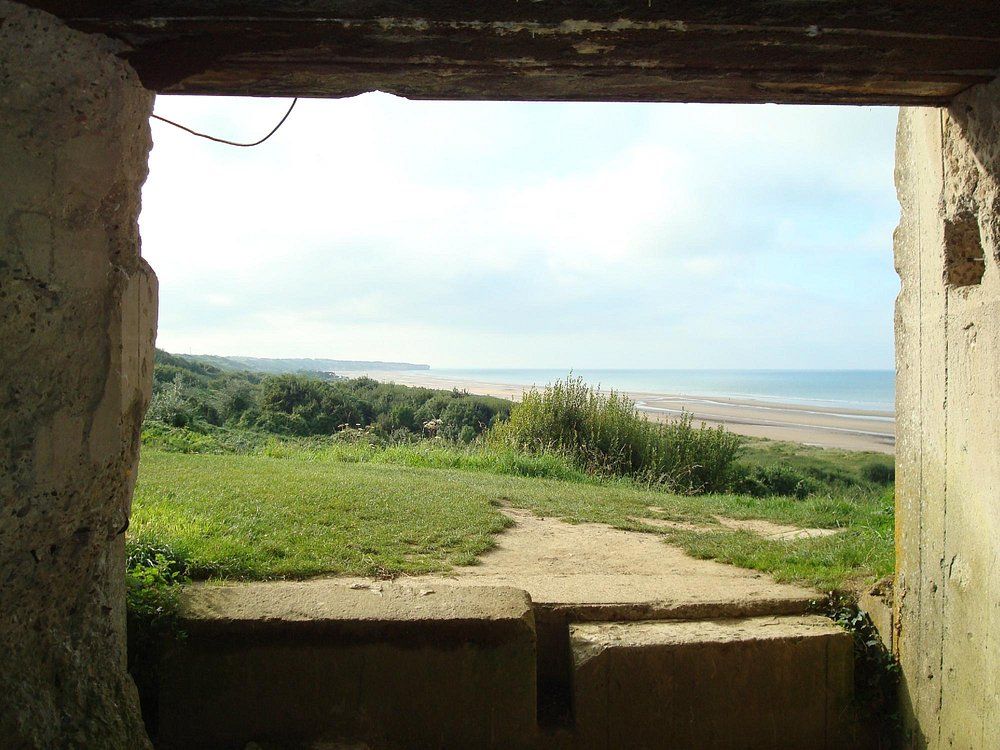
Omaha Beach stretched across nearly 8 kilometers of Normandy coastline, facing the English Channel. This expansive assault area became a critical link between American and British landing zones during the D-Day invasion.
Strategic Importance
Omaha Beach occupied a crucial position in the Allied invasion plans. The beach stretched approximately 8 kilometers (5 miles) from the fishing port of Port-en-Bessin on the east to the mouth of the Vire River on the west. Its position linked the American sector at Utah Beach with the British beaches of Gold, Juno, and Sword.
This central location made Omaha strategically vital. It served as the connection between the Cotentin Peninsula (also known as the Cherbourg Peninsula) and the flatter terrain to the east. Controlling Omaha would prevent German forces from splitting the Allied beachhead.
The beach also provided access to key inland roads and towns necessary for the Allied advance. Despite being the largest of the D-Day assault areas, its placement required careful planning to ensure successful coordination with neighboring beaches.
Natural Obstacles
Omaha’s terrain presented significant challenges to landing forces. Unlike other Normandy beaches, Omaha featured a crescent-shaped shoreline backed by steep bluffs rising 30-50 meters above the beach. These naturally defensive positions gave German forces excellent observation and firing positions.
The beach itself was narrow at high tide and dotted with rocky outcroppings. Approaching soldiers faced loose shingle (pebble beaches) that made vehicle movement difficult. Several small streams cut across the beach, creating additional barriers.
Offshore obstacles included hidden sandbars and reefs that complicated naval approaches. The English Channel’s unpredictable weather conditions added further complications, with potential fog, rough seas, and strong currents affecting landing operations.
These natural features complemented German defensive preparations, making Omaha Beach the most heavily defended and difficult landing zone of the entire D-Day operation.
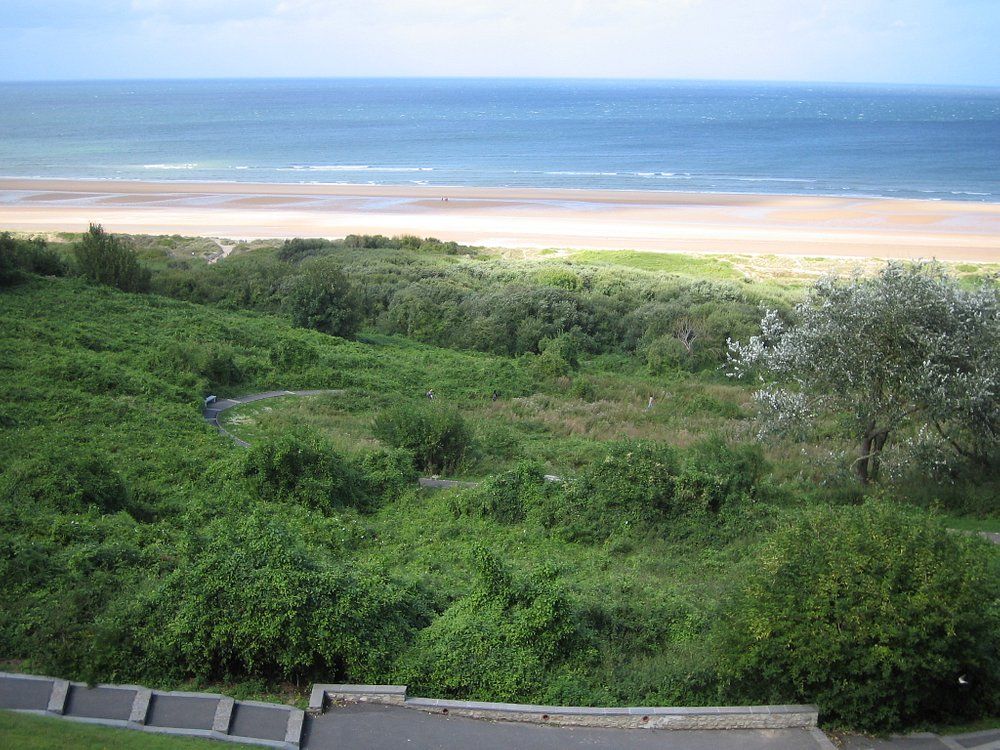
Operation Overlord Planning
Operation Overlord represented one of the most complex military operations ever undertaken. Allied planners spent months developing strategies while reconnaissance teams gathered crucial information about German defenses along the Normandy coast.
Allied Planners’ Strategy
The planning for Operation Overlord began in 1943 under British Lieutenant-General Frederick Morgan. General Dwight D. Eisenhower was appointed Supreme Allied Commander and oversaw the final planning stages.
Initially designed for a May 1944 invasion with three divisions, the plan evolved significantly. Eisenhower and General Bernard Montgomery expanded the scope to include five beach landings with five divisions conducting the initial assault. This change aimed to establish a wider beachhead quickly.
The operation had two main components: Operation Neptune (the naval assault phase) and Operation Overlord (the broader invasion strategy). Planners divided the Normandy coastline into five sectors: Utah, Omaha, Gold, Juno, and Sword beaches.
Deception played a crucial role in the planning. Operation Fortitude created a fictional army in southeast England to convince Germans the invasion would occur at Pas-de-Calais rather than Normandy.
Pre-D-Day Reconnaissance and Bombing
Allied reconnaissance efforts were extensive before the invasion. RAF and USAAF aircraft flew thousands of missions over Normandy, photographing German defenses, troop positions, and potential landing zones.
Small teams of commandos conducted daring nighttime missions to collect sand samples from the beaches. These samples helped determine if the beaches could support heavy vehicles and tanks during the landings.
Naval frogmen secretly mapped underwater obstacles and mines along the approach to Omaha Beach. Their work proved vital as German forces had installed numerous barriers designed to tear open landing craft at various tide levels.
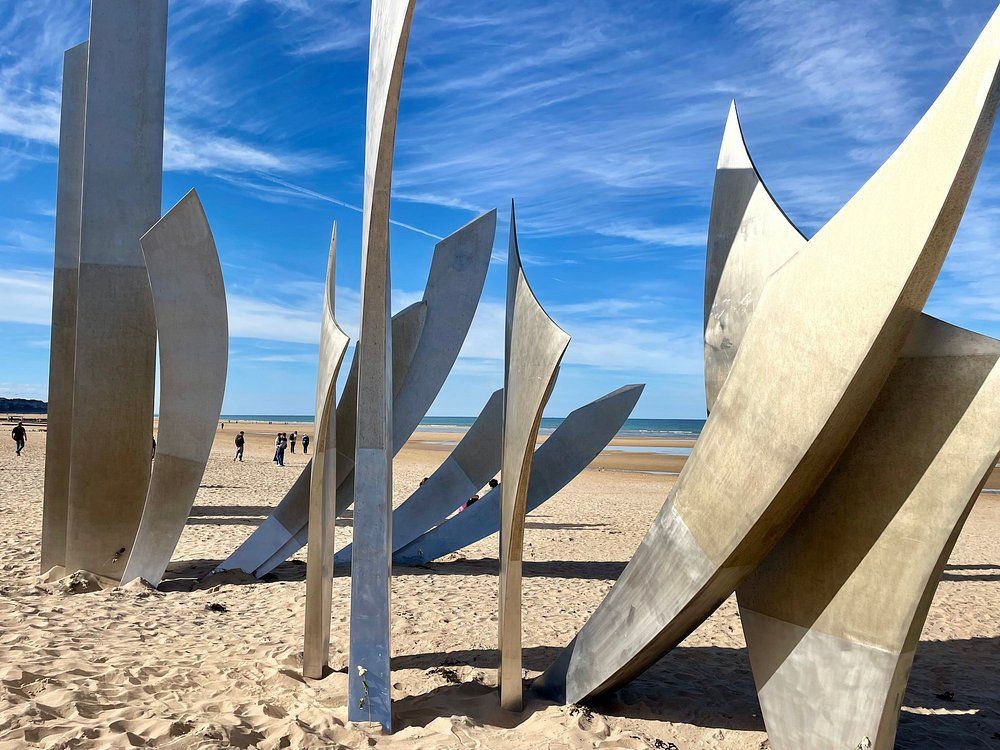
The Allies conducted systematic bombing campaigns in the months before D-Day. These strikes targeted transportation networks throughout France to prevent German reinforcements from reaching the invasion area quickly.
Allied aircraft also attacked German radar stations along the coast to blind defenders to the approaching invasion force. However, to avoid alerting Germans to the actual landing sites, bombers hit multiple coastal areas rather than concentrating solely on Normandy.
D-Day: The Landing at Omaha Beach
On June 6, 1944, American forces landed at Omaha Beach as part of Operation Overlord, facing the most difficult and deadly assault of all five D-Day landing zones. Despite suffering heavy casualties, U.S. troops eventually secured the beachhead through determination and sacrifice.
Assault Divisions at Omaha
The landing at Omaha Beach was primarily assigned to two American divisions: the 1st Infantry Division (“The Big Red One”) and the 29th Infantry Division. The 1st Division’s 16th Infantry Regiment led the eastern sector assault, while the 29th Division’s 116th Infantry Regiment tackled the western sector.
These units were chosen for their experience and training. The 1st Infantry Division had combat experience from North Africa and Sicily, providing valuable battlefield knowledge. The 29th Division, though less experienced, had trained extensively for the invasion.
Supporting the infantry were specialized units including combat engineers, naval demolition teams, and Rangers. These forces were tasked with clearing obstacles and opening exit routes from the beach.
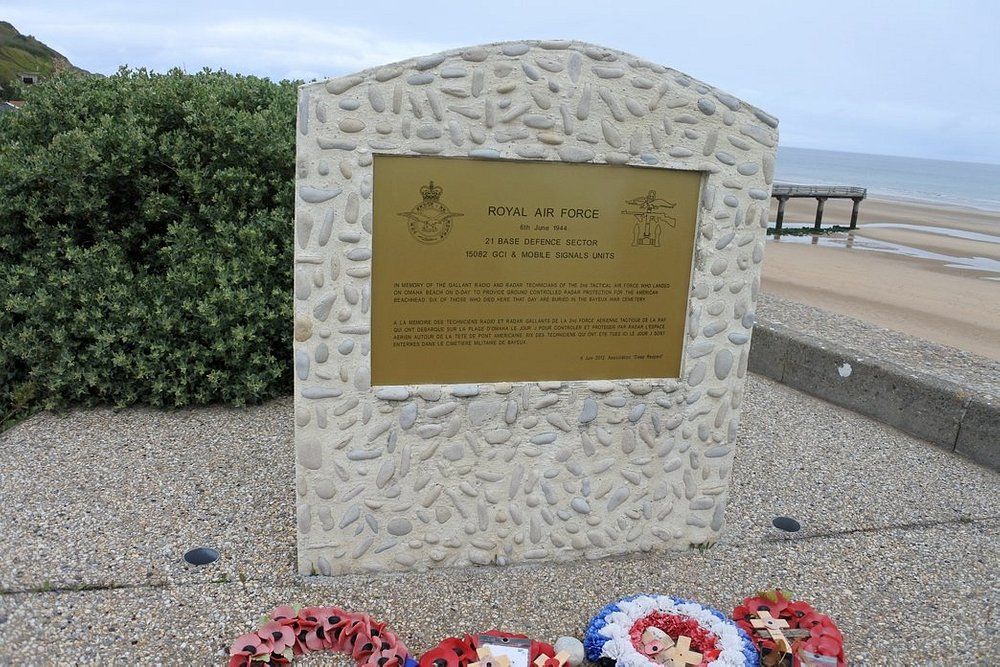
Challenges of the Initial Landing
The landing at Omaha Beach faced severe obstacles from the start. Strong currents pushed landing craft off course, causing confusion and separating units. Many soldiers landed in unexpected locations with the wrong equipment.
German defenses were far stronger than intelligence predicted. The beach was defended by elements of the German 352nd Infantry Division – a veteran unit rather than the expected lower-quality troops. These defenders had fortified the area with:
- Concrete bunkers with overlapping fields of fire
- Extensive barbed wire and beach obstacles
- Mines planted along approach areas
- Pre-sighted artillery positions
Weather and tide conditions complicated matters further. Many tanks and equipment sank before reaching shore. Initial bombing runs missed their targets, leaving German defenses largely intact.
Securing the Beach Head
By mid-morning, the situation at Omaha was critical. Casualties reached approximately 2,400 men – the highest of any D-Day landing zone. Small groups of soldiers, often led by junior officers and NCOs, began making progress by finding gaps in German defenses.
Colonel George Taylor of the 16th Infantry famously rallied his men with: “Two kinds of people are staying on this beach, the dead and those who are going to die. Now let’s get the hell out of here!”
Naval gunfire support proved crucial in targeting German positions. Destroyers moved dangerously close to shore to provide direct fire on enemy bunkers. By early afternoon, American forces had secured several paths off the beach.
By nightfall, despite heavy losses, U.S. troops had advanced about a mile inland. Though they hadn’t reached all first-day objectives, they established a tenuous foothold that would be expanded in the coming days, contributing to the ultimate success of Operation Overlord.
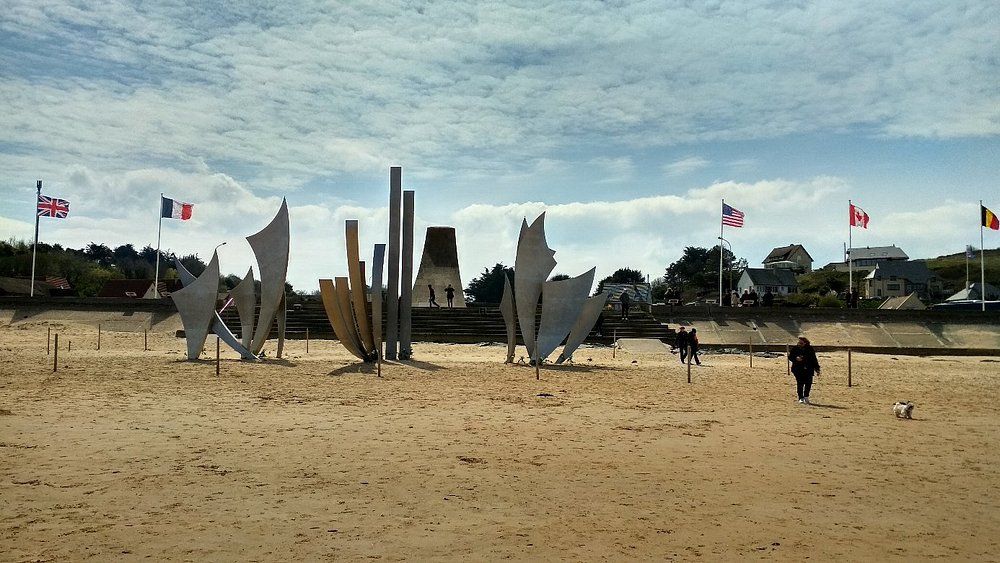
The Human Cost and Heroism
Omaha Beach saw some of the fiercest fighting on D-Day, resulting in devastating casualties but also remarkable acts of bravery. American soldiers faced the heaviest German resistance here, earning the beach its grim nickname “Bloody Omaha.”
Casualties and Losses
The 1st and 29th Infantry Divisions suffered staggering losses at Omaha Beach. By day’s end on June 6, 1944, approximately 2,000 American soldiers had been killed, wounded, or gone missing. Company A of the 116th Infantry Regiment was particularly devastated, losing nearly 90% of its men in the first waves.
Bodies washed in the surf as medics like Ray Lambert, who landed with the first assault wave, worked desperately to save the wounded. Second Lieutenant Walter Sidlowski was documented rescuing fallen comrades from the water.
The casualty rate was so high that military planners feared the Omaha landing might fail completely. Despite the horrific losses, surviving soldiers regrouped and pushed inland by day’s end.
Medal of Honor Recipients
Several soldiers received the Medal of Honor for extraordinary heroism displayed at Omaha Beach. Technical Sergeant Frank Peregory of the 29th Infantry Division single-handedly attacked a German machine gun position that had pinned down his unit, killing eight enemy soldiers.
Brigadier General Norman Cota earned the Distinguished Service Cross by personally leading shell-shocked troops off the beach. His famous words, “Rangers, lead the way!” inspired demoralized men to advance.
Medics like Ray Lambert, who is among the few surviving heroes of D-Day, risked their lives repeatedly in the open to treat wounded comrades. Many medal recipients never lived to receive their awards, having made the ultimate sacrifice on the blood-soaked sand.
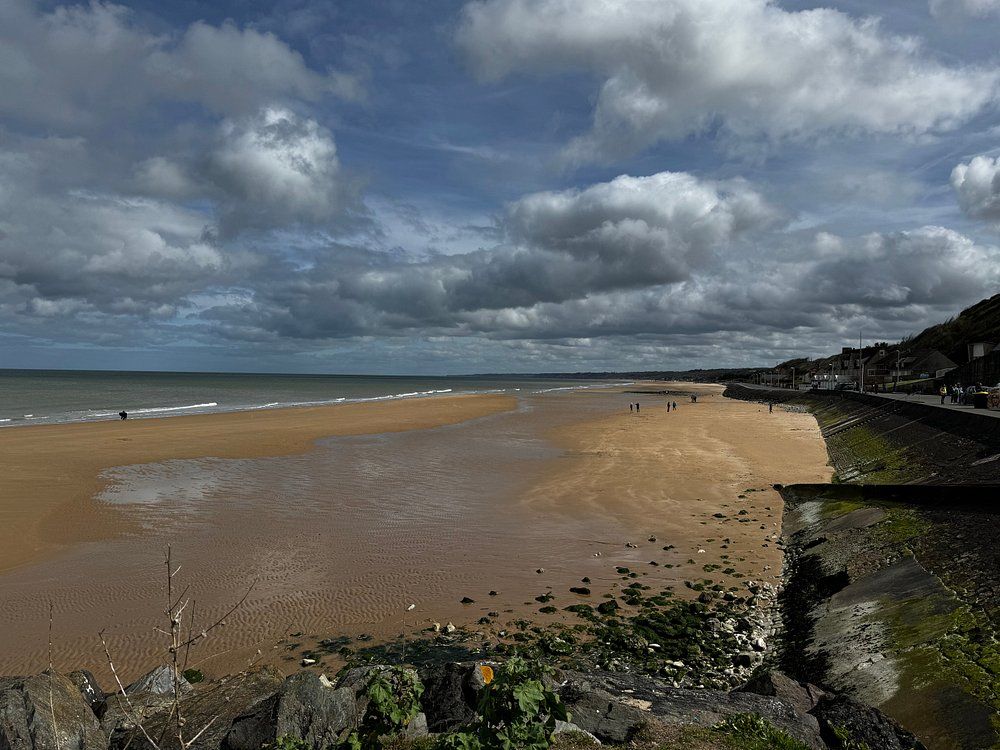
German Defensive Strategy
The Germans established formidable defensive positions along Omaha Beach, creating a deadly gauntlet for Allied forces on D-Day. Their strategy focused on repelling invaders at the shoreline through layered defenses and concentrated firepower.
Fortifications and Obstacles
The German defenses at Omaha Beach consisted of fourteen strongpoints, called Widerstandsnester (resistance nests), numbered WN 60 through WN 73 spanning approximately 5 miles (8 km) of coastline. These interconnected positions were strategically placed on the bluffs overlooking the beach, giving German defenders excellent fields of fire.
Each strongpoint contained concrete bunkers, trenches, and underground shelters designed to withstand naval bombardment. The Germans constructed these fortifications as part of the Atlantic Wall defense system ordered by Hitler.
Beach obstacles included Belgian gates, hedgehogs (metal X-shaped barriers), and wooden stakes—many with mines attached—placed at different tide levels. These were specifically designed to tear open landing craft and trap soldiers in exposed positions during the assault.
German Machine Guns and Artillery
Machine gun emplacements formed the backbone of German defenses at Omaha Beach. The Germans positioned MG-42 machine guns—capable of firing up to 1,200 rounds per minute—in overlapping fields of fire that covered every approach to the beach.
These machine gun nests were arranged in layers up the bluffs and connected by a network of trenches. This arrangement allowed German gunners to maintain cover while moving between positions, making them difficult targets for Allied naval fire.
Artillery pieces placed further inland provided additional firepower. The Germans strategically positioned 88mm guns, mortars, and other artillery to target specific landing zones and approach routes. These weapons could deliver devastating fire on troops attempting to move off the beach.
The German defenders also used pre-ranged firing coordinates, meaning they knew exactly how to aim at specific beach sections without needing direct observation, increasing their accuracy even under poor visibility conditions.
Combined Allied Efforts
The D-Day invasion represented an unprecedented level of cooperation between Allied forces. The operation’s success relied on coordinated actions from multiple military branches across several nations, all working toward the common goal of establishing a foothold in Nazi-occupied France.
Contribution of Airborne Divisions
The 101st Airborne Division played a crucial role in the hours before the beach landings. These paratroopers dropped behind enemy lines during the night of June 5-6, 1944, to secure key routes and bridges inland from Utah Beach.
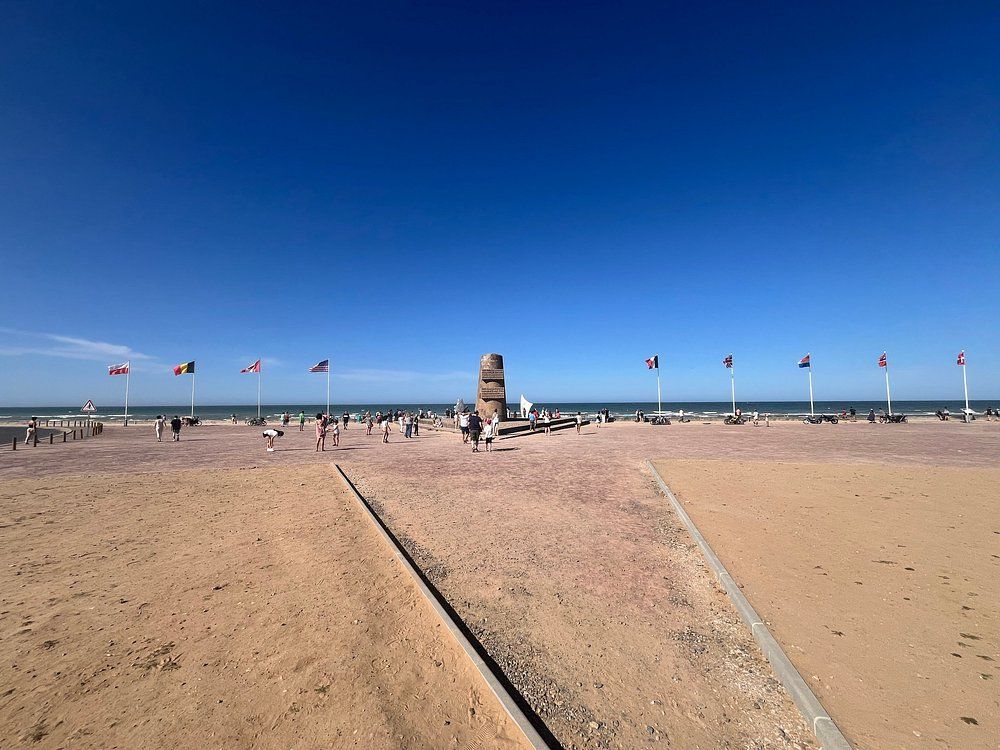
The British 6th Airborne Division simultaneously landed east of the invasion area. Their mission focused on capturing bridges over the Orne River and Canal, preventing German reinforcements from reaching the beaches.
Despite scattered drops that left many units fragmented, these airborne forces succeeded in creating confusion among German defenders. Their presence inland forced the Germans to split their attention between the beaches and the paratroopers.
Approximately 13,000 American paratroopers from the 101st and 82nd Airborne Divisions participated in the early hours of D-Day.
Naval and Artillery Support
The U.S. Navy provided critical fire support for troops landing at Omaha Beach. Battleships, cruisers, and destroyers positioned offshore delivered sustained bombardment against German defensive positions.
Several cruisers, including the USS Augusta and HMS Glasgow, fired thousands of shells at concrete bunkers and artillery positions. When initial bombardments proved less effective than hoped at Omaha Beach, destroyers moved dangerously close to shore to provide direct fire support.
Operation Neptune, the naval component of Overlord, involved over 5,000 vessels. This naval force created the largest armada ever assembled in military history.
Naval gunfire worked alongside aerial bombardment to suppress enemy defenses. The coordination between air and naval forces represented a new level of combined arms warfare that would become standard in future operations.
Aftermath and Commemoration
After the bloody battle at Omaha Beach, Allied forces pushed inland to liberate France and eventually defeat Nazi Germany. The beach became a symbol of Allied sacrifice and courage during World War II.
The area was quickly transformed into a temporary harbor for supplies. Military debris was cleared, and by August 1944, Normandy beaches were fully operational support areas for the advancing Allied armies.
Omaha Beach is now home to the Normandy American Cemetery, where 9,388 American soldiers rest. The cemetery overlooks the very shores where many of these soldiers fought and died.
June 6th ceremonies are held annually, with major commemorations every five years. The 80th anniversary in 2024 drew approximately 10,000 attendees to honor the fallen.
The 1998 film Saving Private Ryan brought renewed attention to Omaha Beach with its realistic opening scene depicting the brutal landing. This Hollywood portrayal introduced younger generations to the horrors faced by soldiers on D-Day.
Today, visitors can see remnants of German bunkers along the coastline. Several museums in the area preserve the history of the invasion and educate the public about this pivotal moment in military history.
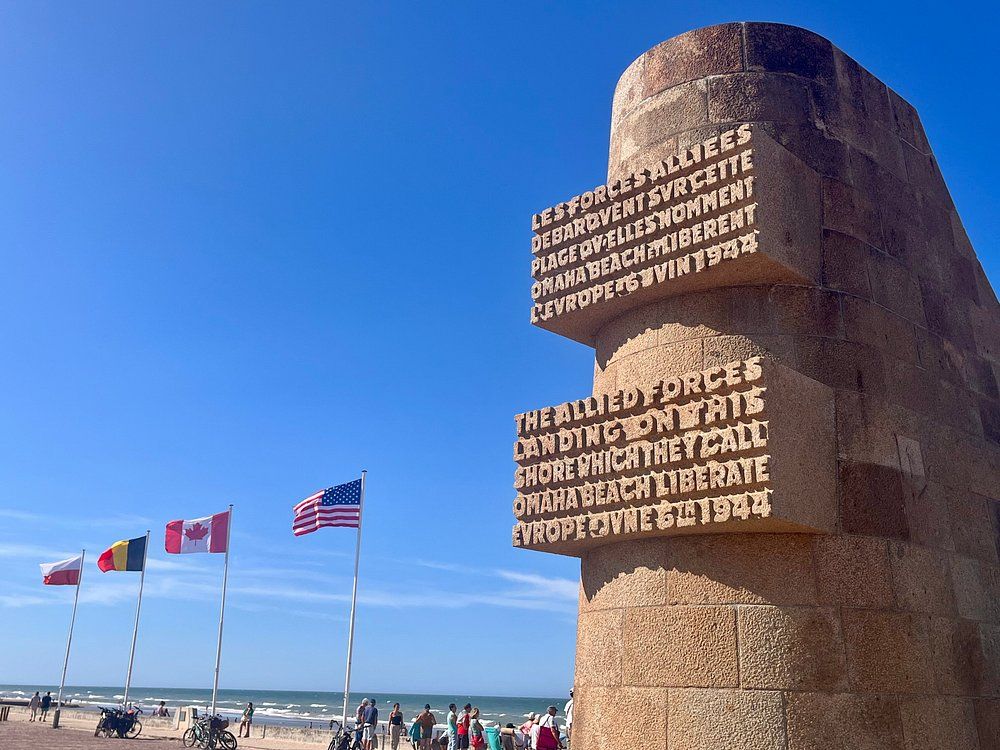
Monuments and memorials dot the landscape, including the striking stainless steel sculpture “Les Braves” that rises from the sand. These tributes ensure that the sacrifice made on this stretch of Normandy coastline is never forgotten.
Impact on Popular Culture
The events of Omaha Beach during D-Day have left a powerful mark on popular culture, influencing films, television, and other media for decades.
Films have perhaps made the strongest impact, with Steven Spielberg’s “Saving Private Ryan” (1998) standing as the most influential portrayal. Its opening 27-minute sequence depicting the Omaha Beach landing changed how war is portrayed in cinema, using shaky cameras and graphic realism to convey the brutal chaos soldiers experienced.
Television has also embraced World War II themes. In the 1960s, several high-rated shows focused on the war, including “Combat!” and “Hogan’s Heroes.” These shows, while fictional, kept the memory of the war alive for new generations.
Video games like “Call of Duty” and “Medal of Honor” have featured Omaha Beach landings, allowing players to experience virtual versions of this historic battle. These interactive experiences have educated younger audiences about D-Day’s significance.
D-Day commemorations appear regularly in documentaries and news specials, especially around June 6th anniversaries. These productions often include interviews with veterans, providing firsthand accounts of the Normandy invasion.
Literature continues to explore Omaha Beach through both fiction and non-fiction works. These books examine personal stories, military strategy, and the battle’s historical significance.
Through these various media, Omaha Beach and D-Day remain alive in cultural memory, ensuring that younger generations understand the sacrifice and courage displayed on those Normandy shores.
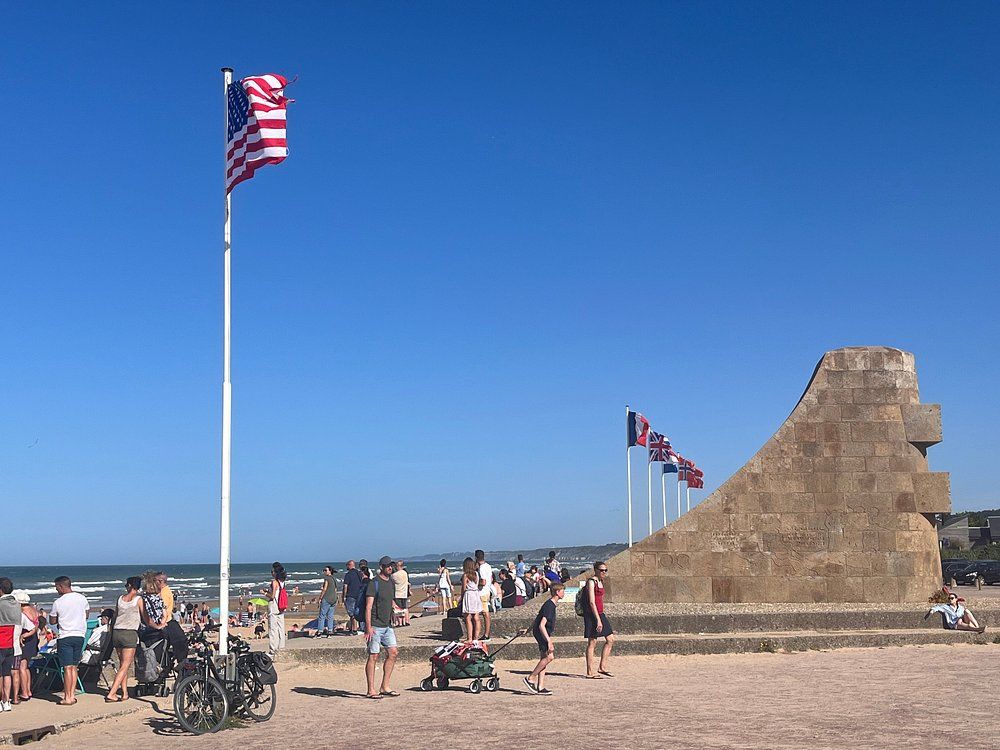
Comparative Analysis of Allied Beaches
The Allied invasion of Normandy involved landings across five distinct beaches, each with unique challenges and outcomes. The terrain, defenses, and battle conditions varied significantly across Utah, Omaha, Gold, Juno, and Sword beaches.
Utah Beach vs. Omaha Beach
Utah Beach presented considerably different challenges than Omaha Beach. While approximately 34,000 troops landed at Omaha Beach, both beaches witnessed very different casualty rates. Utah Beach was backed by relatively flat terrain that allowed for easier movement inland once troops made it ashore.
Omaha Beach, by contrast, featured high bluffs and stronger German defenses that made it notably more difficult to capture. The battle at Omaha was particularly brutal and became known as one of the bloodiest in American history.
Weather and tide conditions affected both beaches, but Omaha’s geographic layout created natural choke points that German defenders exploited effectively. American forces at Omaha faced steep cliffs that provided German gunners with excellent firing positions.
Pointe du Hoc Mission
The 2nd Ranger Battalion, led by LTC James E. Rudder, undertook one of D-Day’s most daring missions at Pointe du Hoc. This 100-foot cliff situated between Utah and Omaha beaches was believed to house German artillery that could threaten both landing zones.
Rangers scaled the sheer cliffs using ropes and ladders while under heavy enemy fire. Despite losing many men during the climb, they successfully reached the top only to discover that the main guns had been moved.
The Rangers held their position against fierce German counterattacks for two days despite being isolated and suffering heavy casualties. Only about 90 of the original 225 Rangers remained combat-effective by the time reinforcements arrived.
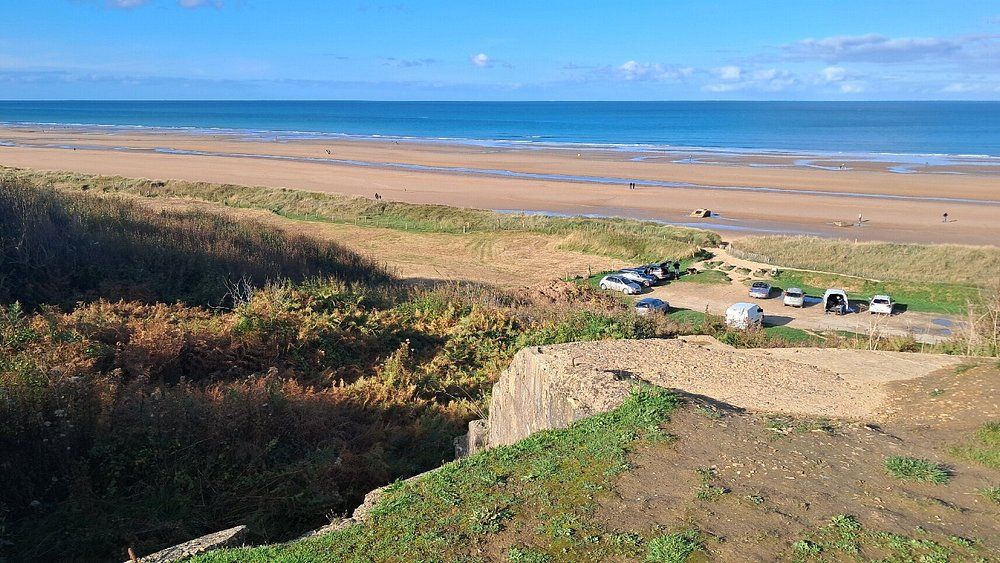
Evolution of Military Tactics
The invasion of Omaha Beach marked a significant advancement in amphibious warfare tactics. Before D-Day, military leaders learned valuable lessons from earlier landings in North Africa and Sicily. These experiences helped shape the approach at Normandy.
Amphibious Training became more rigorous after observing the challenges faced in previous campaigns. Soldiers practiced beach landings repeatedly, often in conditions similar to what they would face in the European Theater.
The concept of establishing a Beach Head evolved substantially. Earlier tactics focused simply on getting troops ashore, but by D-Day, the strategy included detailed plans for rapid inland movement and securing key positions.
Equipment also changed. Special vehicles like amphibious tanks and naval gunfire support were integrated into landing plans. Unfortunately, many of these innovations failed at Omaha due to rough seas and strong defenses.
Small-unit leadership proved crucial when plans went awry. Junior officers and NCOs took initiative when landing crafts missed their targets, demonstrating the importance of adaptable command structures.
The tactical approach changed during the battle itself. When frontal assaults failed, troops began finding paths up the bluffs between German strongpoints rather than attacking them directly.
Radio communication became vital for coordinating naval support with ground movements. This represented a significant shift from earlier, more rigid battle plans.
More Reading:
Read about each of the different landing zones here:
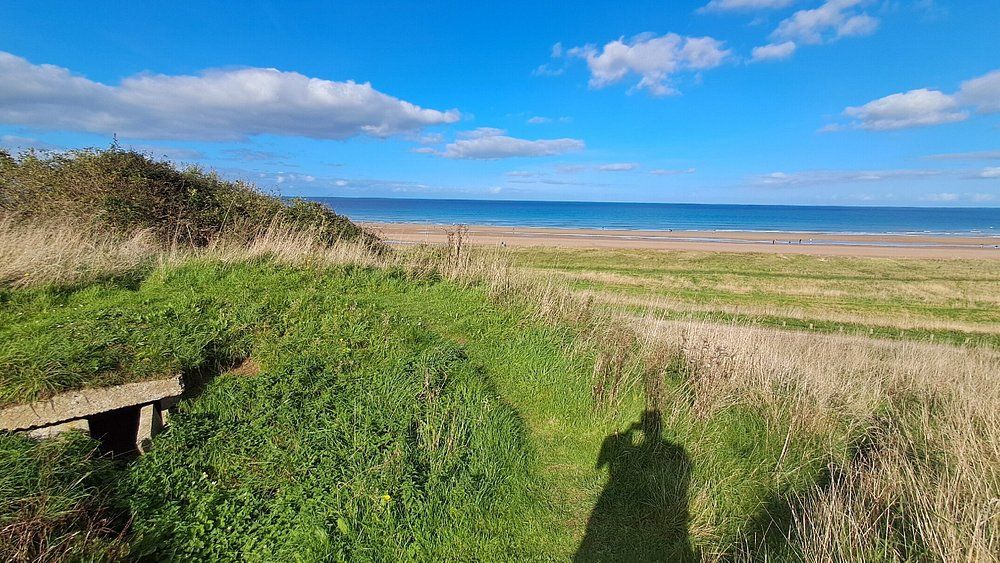
Omaha Beach Travel Guide
Omaha Beach stretches peacefully along the Normandy coast today, but on June 6, 1944, it witnessed one of the most significant military operations in history. As you walk along this four-mile stretch of sand, you’re treading on ground where American troops faced devastating fire from German forces positioned on the bluffs above. Visiting Omaha Beach gives you a profound understanding of D-Day’s human cost and its crucial role in the Allied campaign to liberate France from German occupation.
Planning your trip to Omaha Beach can be overwhelming with so many historical sites to explore. From the American Cemetery to Pointe du Hoc, each location tells part of the story of how General Eisenhower’s forces established a foothold in Nazi-occupied Europe. The beach itself, once soaked with the blood of young soldiers, now offers a quiet place for reflection on the sacrifice that helped turn the tide against the Axis powers in World War II.
You can choose from several itineraries to experience Omaha Beach, whether as a day trip from Paris or part of a longer stay in Normandy. The area provides an intimate look at where Montgomery’s British forces and American troops under Eisenhower’s command began the Battle of Normandy, which would eventually lead to victory in Europe and the liberation championed by Charles de Gaulle.
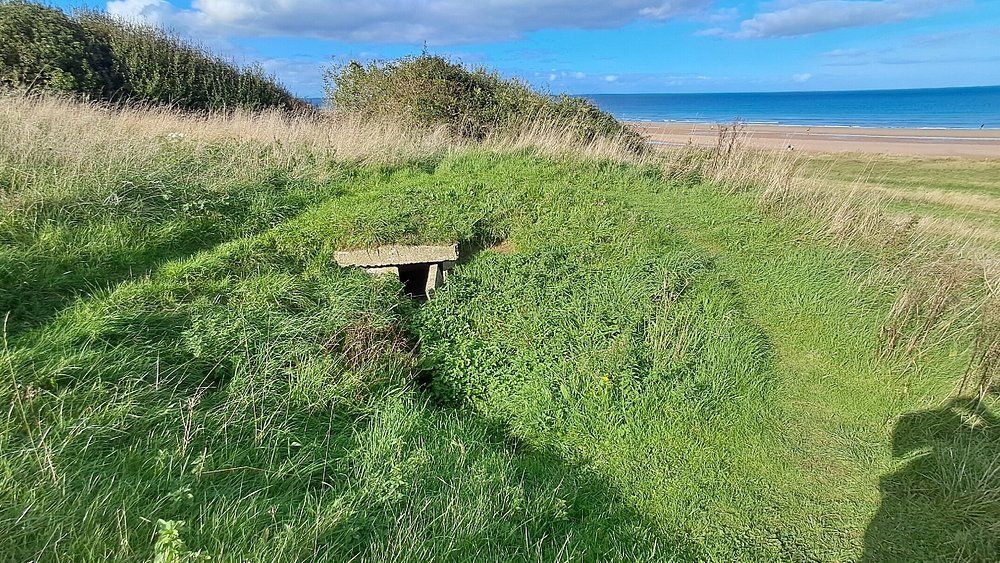
Visitor Guide
Visiting Omaha Beach offers a powerful glimpse into one of World War II’s most significant moments. This stretch of coastline, running from Vierville-sur-Mer to Colleville-sur-Mer, was the site of the bloodiest D-Day landing on June 6, 1944.
You’ll want to allow at least a half-day to explore the main sites, though a full day is better to fully appreciate the area’s historical significance. The beach is accessible year-round, but summer months (June-August) offer the best weather.
Key Sites to Visit:
- American Cemetery at Colleville-sur-Mer
- Omaha Beach Memorial
- WN62 German Bunker
- Overlord Museum
- Les Braves Monument on the beach
Guided tours are highly recommended to understand the full context of Operation Overlord. Many tour operators offer half-day or full-day options focusing on the American sector of the D-Day beaches.
If you’re visiting independently, start at the Visitor Center near the American Cemetery for an orientation to the battle. From there, make your way down to the beach itself where Allied troops faced devastating fire from German defenses positioned on the bluffs.
The beach looks particularly poignant at low tide, similar to the conditions when Allied forces first landed. You can walk the same sand where American soldiers fought their way inland against fierce German resistance.
Most visitors find the experience deeply moving. Wear comfortable shoes and bring a jacket as the coastal winds can be chilly even in summer.
Nearby Accommodations
Finding the right place to stay near Omaha Beach is essential for your Normandy D-Day exploration. You’ll find options ranging from charming countryside manors to convenient city-based hotels.
Bayeux serves as an excellent base for your D-Day adventures. Just 10 miles from Omaha Beach, this charming medieval town offers numerous hotels, including the highly-rated Hotel Domaine de Bayeux. You’ll appreciate the central location and easy access to transportation.
For those wanting to stay closer to the beach, Saint-Laurent-sur-Mer and Colleville-sur-Mer offer accommodations within walking distance of Omaha Beach. These smaller villages provide a more intimate experience with the historic landscape.
If you’re exploring multiple landing beaches, consider staying at Hôtel Ferme de la Rançonnière, located between Gold and Juno beaches. This converted farmhouse offers character and convenience.
Hotel Domaine Utah Beach is perfect if you’re focusing on Utah Beach alongside Omaha. You’ll be immersed in history while enjoying comfortable accommodations.
Booking Tips:
- Reserve 3-6 months in advance for summer visits (June-August)
- Consider Arromanches accommodations for views of the artificial harbor remains
- Look for hotels offering bicycle rentals for exploring the coastline
- Check if your hotel provides transportation to the beaches or tours
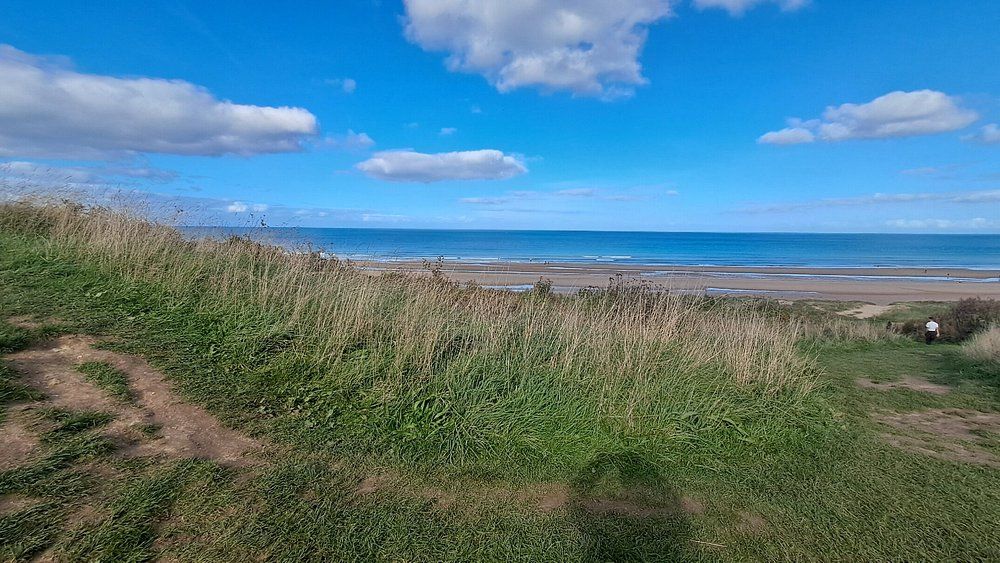
Nearby Things To Do
When you visit Omaha Beach, you’ll find many historic sites within easy driving distance. These places help tell the story of D-Day and the Battle of Normandy.
The Normandy American Cemetery sits on a cliff overlooking Omaha Beach. Nearly 10,000 American soldiers rest here. The cemetery’s visitor center explains the D-Day operation through personal stories and artifacts.
Pointe du Hoc, just 4 miles west of Omaha Beach, features massive bomb craters and German bunkers. U.S. Rangers scaled these 100-foot cliffs during the invasion, and you can walk the same ground today.
Utah Beach, the westernmost landing site, is about 20 minutes away by car. The Utah Beach Museum there houses a B-26 bomber and explains the American landings.
Other Normandy beaches worth visiting include:
- Gold Beach (British forces)
- Juno Beach (Canadian forces)
- Sword Beach (British and French forces)
The Juno Beach Centre offers excellent exhibits about Canada’s role in the invasion.
Longues-sur-Mer battery, with its intact German gun emplacements, gives you a clear picture of the Atlantic Wall defenses.
For a deeper understanding of the war, visit the Memorial Museum in Caen. This impressive facility covers not just D-Day but the entire war and its aftermath.
The historic village of Sainte-Mère-Église, where American paratrooper John Steele famously caught his parachute on the church steeple, features a museum dedicated to airborne troops.
Don’t miss Pegasus Bridge, captured by British glider troops in a daring night operation.


